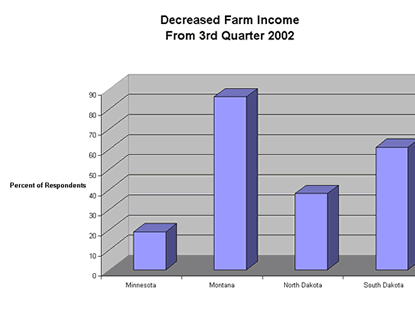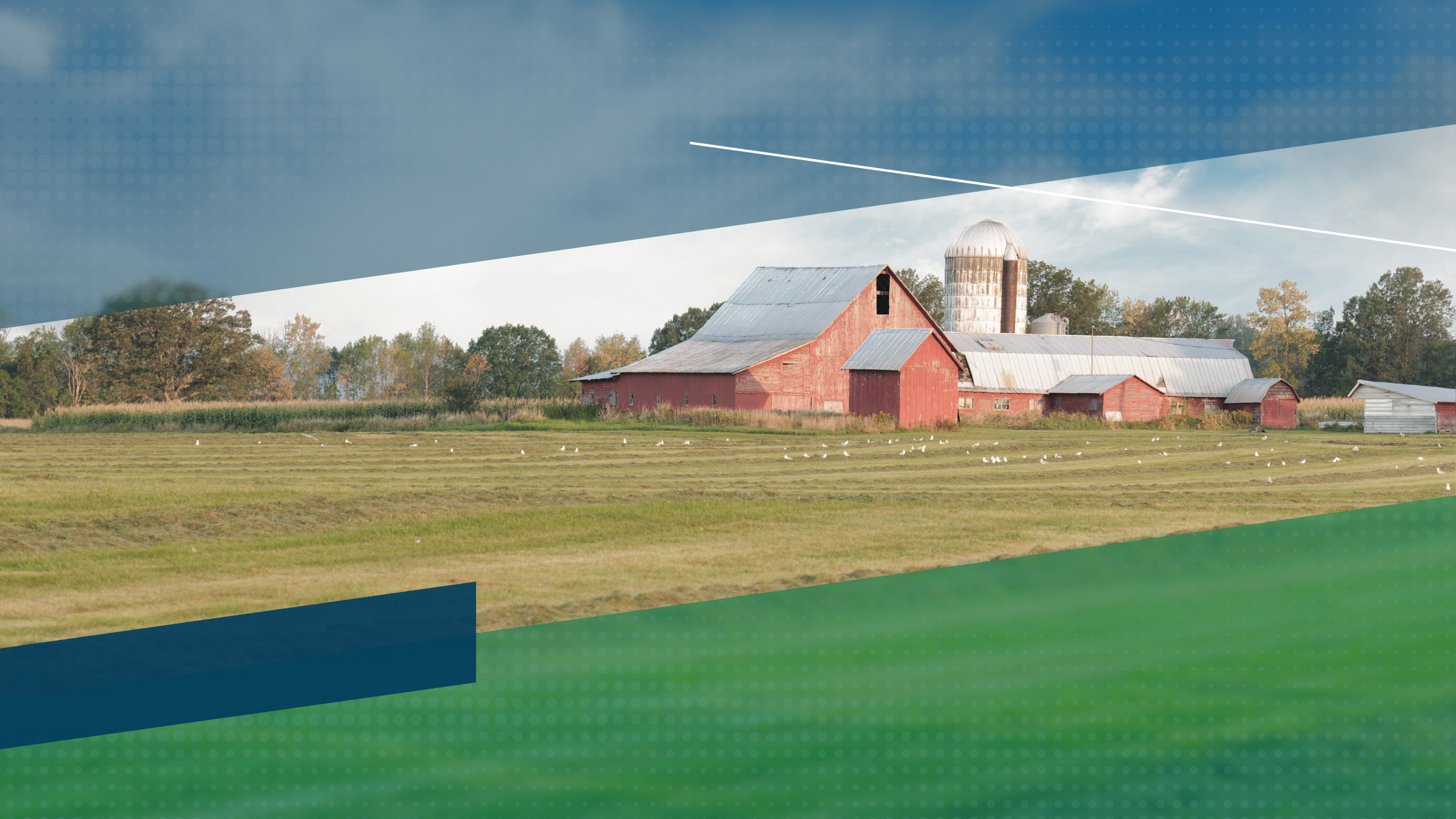Agricultural financial conditions were on the upswing in Minnesota and the eastern Dakotas, but poor in Montana and the western Dakotas, according to the Minneapolis Fed's fourth-quarter agricultural credit conditions survey. “Excellent crop in the area, due to timely, but not overabundant moisture supply. With good crop pricing opportunities, we have good farm income and few repayment issues on crop producers,” wrote a Minnesota banker. This remark aptly describes farm conditions in Minnesota and the eastern parts of South Dakota and North Dakota. Conversely, a lender from western South Dakota noted that “this area has experienced a drought and a lot of our ranchers have sold off breeding herds,” reflecting the situation in Montana and western Dakotas.
Farm income
While farm income varied across the district, effects of drought were apparent in some survey responses. Bankers were especially negative in Montana and South Dakota: 86 percent and 61 percent, respectively, reported decreased agricultural income. “Crop yields and economic conditions vary greatly,” observed a South Dakota lender. Another South Dakota lender commented that “drought conditions from last summer and lack of moisture this winter are having a negative impact.”
About half the survey respondents reported a decrease in farm income in the fourth quarter, while 30 percent noted an increase. Row-crop producers in Minnesota and parts of the Dakotas enjoyed a good harvest and adequate prices. As a result, 41 percent of Minnesota respondents reported above-average income, while only 19 percent indicated a decrease. In North Dakota, responses were more evenly distributed: 48 percent reported increased income, and 38 percent noted a decrease.

Source: Federal Reserve Bank of Minneapolis
Farm household and capital spending
Household income and capital spending followed approximately the same pattern as farm income. Overall household spending remained relatively balanced, as 17 percent of overall respondents reported higher household spending, 57 percent noted no change and 26 percent indicated a decrease. However, 28 percent of South Dakota and 15 percent of Minnesota lenders revealed lower household spending.
Meanwhile, the drop in capital spending was severe: 46 percent of lenders overall indicated decreased levels, with a low of 19 percent of Minnesota respondents and a high of 61 percent of South Dakota bankers. “Spending has been cut on both living and capital items,” reported a South Dakota lender.
Loan repayments, renewals and limits
The rate of loan repayments decreased, and loan renewals or extensions increased. The 16 percent of lenders who reported increases in the rate of loan repayment were more than offset by the 27 percent who noted decreases. Minnesota agricultural lenders were the most upbeat, with 30 percent indicating higher rates of loan repayment; only 11 percent reported slower rates of repayment. However, in Montana 57 percent reported slower loan repayments vs. 14 percent at increased repayment rates.
At the same time, 30 percent of all respondents noted increases in loan renewals or extensions and 13 percent decreases. Again, Minnesota lenders were the most positive, with only 7 percent reporting higher renewal amounts, while 57 percent of Montana lenders observed more farmers and ranchers renewing and extending loans.
There is a limit to the amount that agricultural customers can borrow. District respondents reported that about a quarter of their farm and ranch customers were at their loan limit—from a high of 38 percent in Montana down to 20 percent in Minnesota.
Demand for loans and required collateral
Overall loan demand was level during the fourth quarter, but varied significantly across the district. The number of respondents who indicated increased loan demand about equaled the number reporting decreased demand. However, only 8 percent of Minnesota respondents observed increased loan demand compared with 57 percent in Montana. Meanwhile, collateral requirements increased at only a few of the responding banks. One of five lenders said that collateral requirements increased, while the remaining indicated no change in collateral requirements. However, 71 percent of Montana respondents reported increased collateral requirements.
Land values
Overall land prices continued to increase due to a variety of reasons. “Real estate values in some areas continue to rise due to good crop yields, lower interest rates and expanding well capitalized operations,” wrote a banker from eastern South Dakota. District farmland and ranchland prices increased an average of 13 percent and 9 percent, respectively, from a year ago. Average farmland price increases varied across the district from a 7 percent increase in Montana to an 18 percent increase in western Wisconsin. “[Quantity of] nonproducing farmland being sold as recreational land, and price is actually higher than production lands,” commented a western Wisconsin lender. A cautionary note: Real estate prices can vary significantly, not only from state to state or county to county, but even within a county.
Outlook
Agricultural income is expected to decrease in the first quarter of 2003 for all district states except Minnesota, where it is projected to be level. Across the district, 44 percent of respondents anticipate lower income and only 16 percent expect higher income. In Montana, 57 percent of respondents forecast decreased income. “Severe drought in local areas has forced borrowers to either purchase feed and/or sell down livestock. Reduction in livestock numbers will adversely impact next years cash flows,” reported a Montana lender. In Minnesota, 22 percent foresee increases in farm income and 22 percent expect decreases.
This expected reduction in income affects other areas. Forty-six percent of district respondents anticipate lower levels of capital spending and only 14 percent predict increased spending. In addition, loan demand, renewals and extensions are expected to increase in the first quarter of 2003. “Most borrowers will not be able to make scheduled payments, some not even able to pay back operating loans. This is also affecting 100 percent of main street businesses, as we are totally ag dependent,” commented a western North Dakota banker.





